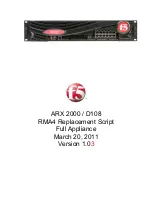
Stopping a system or logical partition
Learn how to stop a system or logical partition as a part of a system upgrade or service action.
Attention:
Using either the power-on button on the control panel or entering commands at the
Hardware Management Console (HMC) to stop the system can cause unpredictable results in the data
files. Also, the next time you start the system, it might take longer if all applications are not ended before
stopping the system.
To stop the system or logical partition, select the appropriate procedure.
Stopping a system that is not managed by an HMC
You might need to stop the system to complete another task. If your system is not managed by the
Hardware Management Console (HMC), use these instructions to stop the system by using the power
button or the Advanced System Management Interface (ASMI).
Before you stop the system, follow these steps:
1.
Ensure that all jobs are completed and end all applications.
2.
If a Virtual I/O Server (VIOS) logical partition is running, ensure that all clients are shut down or that
the clients have access to their devices by using an alternative method.
Stopping a system by using the control panel
You might need to stop the system to complete another task. If your system is not managed by the
Hardware Management Console (HMC), use these instructions to stop the system by using the power
button.
The following procedure describes how to stop a system that is not managed by the HMC.
1.
Log in to the host partition as a user with the authority to run the
shutdown
or
pwrdwnsys
(Power
Down System) command.
2.
At the command line, enter one of the following commands:
v
If your system is running the AIX
®
operating system, type
shutdown
.
v
If your system is running the Linux operating system, type
shutdown -h now
.
v
If your system is running the IBM i operating system, type
PWRDWNSYS
. If your system is partitioned,
use the
PWRDWNSYS
command to power down each of the secondary partitions. Then, use the
PWRDWNSYS
command to power down the primary partition.
The command stops the operating system. The system power turns off, the power-on light begins to
slowly flash, and the system goes into a standby state.
3.
Record the IPL type and the IPL mode from the control panel display to help you return the system
to this state when the installation or replacement procedure is completed.
4.
Set the power switches of any devices that are connected to the system to off.
Stopping a system by using the ASMI
You might need to stop the system to complete another task. If your system is not managed by the
Hardware Management Console (HMC), use these instructions to stop the system by using the Advanced
System Management Interface (ASMI).
To stop a system by using the ASMI, complete the following steps:
1.
On the ASMI Welcome pane, specify your user ID and password, and click Log In.
2.
In the navigation area, click Power/Restart Control > Power On/Off System. The power state of the
system is displayed.
3.
Specify the settings as required and click Save setting and power off.
Common procedures for removing or replacing the chassis management card
17
Summary of Contents for Power Systems EMX0 PCIe Gen3
Page 1: ...Power Systems Chassis management card for the EMX0 PCIe Gen3 I O expansion drawer IBM ...
Page 2: ......
Page 3: ...Power Systems Chassis management card for the EMX0 PCIe Gen3 I O expansion drawer IBM ...
Page 16: ...xiv Power Systems Chassis management card for the EMX0 PCIe Gen3 I O expansion drawer ...
Page 24: ...8 Power Systems Chassis management card for the EMX0 PCIe Gen3 I O expansion drawer ...
Page 72: ...56 Power Systems Chassis management card for the EMX0 PCIe Gen3 I O expansion drawer ...
Page 84: ...68 Power Systems Chassis management card for the EMX0 PCIe Gen3 I O expansion drawer ...
Page 85: ......
Page 86: ...IBM ...







































